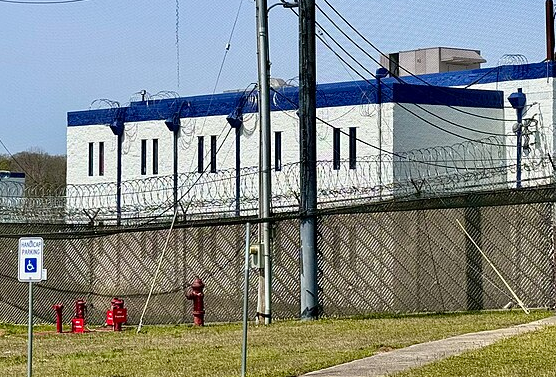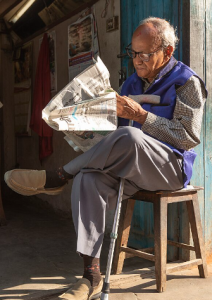
Overdose Prevention for Justice-Involved Individuals
Imagine being released from prison after serving time for opioid-related offenses. You’ve been clean for a while, but the world outside hasn’t changed; it’s still filled with the same challenges and temptations. Within days, or even hours, you face a stark reality: the risk of an overdose is incredibly high. This scenario is all too common for many individuals released from prison, highlighting the urgent need for effective overdose prevention programs tailored to justice-involved populations.
Why Overdose Prevention Matters
The risk of opioid overdose is significantly higher for individuals immediately following their release from prison. This increased risk is due to several factors, including a loss of drug tolerance during incarceration and the stressful transition back into the community. Without proper intervention, these individuals are more likely to relapse and potentially overdose, often with fatal consequences.
A recent study conducted a thorough review of existing research on opioid overdose prevention programs specifically designed for justice-involved populations. The findings are crucial for shaping future interventions and policies to better support these individuals.
The Study: Uncovering Key Themes
Researchers reviewed 43 published papers from 2010 to 2020, focusing on opioid overdose prevention in criminal justice settings. They identified five core themes: acceptability, accessibility, effectiveness, feasibility, and participant overdose risk. Let’s break down what each of these themes means and why they are important.
1. Acceptability
Acceptability refers to how willing and able individuals are to use overdose prevention tools like naloxone, a medication that can reverse opioid overdoses. The study found that those with a history of overdose or who had witnessed an overdose were more likely to be interested in naloxone training and usage. This willingness is crucial because naloxone can save lives when administered promptly.
2. Accessibility
Accessibility is about how easily individuals can obtain naloxone. The study highlighted that access to naloxone often depends on the availability of community programs, such as syringe exchange programs. While some prisons provide naloxone at discharge, ongoing access through community programs is essential for sustained overdose prevention.
3. Effectiveness
Effectiveness measures how well overdose prevention programs work. The study showed that naloxone training programs, especially those that include take-home naloxone kits, are generally effective. For example, Scotland’s National Naloxone Program significantly reduced opioid-related deaths among recently released prisoners.
4. Feasibility
Feasibility examines the practical aspects of implementing overdose prevention programs. Challenges include logistical issues within prisons, such as scheduling and staffing, and the need for better integration with community services. Successful programs often require strong leadership and collaboration between prisons and community organizations.
5. Participant Overdose Risk
Understanding the specific risks that justice-involved individuals face is critical for designing effective interventions. The study found that the risk of overdose is highest immediately after release, typically within the first two weeks. Factors such as severe drug use disorders, mental health issues, and lack of social support further increase this risk.
Why You Should Care
Overdose prevention programs save lives. By understanding the unique challenges faced by justice-involved individuals, we can develop better strategies to support their transition back into the community. Effective overdose prevention not only reduces the number of fatalities but also helps individuals rebuild their lives, reducing the overall burden on the healthcare and criminal justice systems.
Taking Action: What Can Be Done?
To improve overdose prevention for justice-involved individuals, several steps can be taken:
- Expand Naloxone Training and Distribution: Ensure that naloxone is widely available both within prisons and in the community. Training should be provided to inmates, their families, and community service providers.
- Enhance Community Support: Strengthen the connections between correctional facilities and community organizations. This includes providing continuous support and resources to individuals post-release.
- Address Barriers to Access: Overcome logistical challenges within prisons and reduce the stigma associated with carrying naloxone. Policies should be in place to protect individuals from legal repercussions when they intervene in an overdose situation.
- Focus on High-Risk Periods: Target interventions during the critical first weeks after release. Providing intensive support during this period can significantly reduce the risk of overdose.
Let us know your thoughts!
We want to hear from you! Consider these questions and share your thoughts in the comments:
- Have you or someone you know been affected by the challenges of transitioning from incarceration? What support was most helpful during that time?
- What do you think are the biggest barriers to effective overdose prevention in your community? How can these barriers be addressed?
Conclusion
The findings from this study underscore the importance of targeted overdose prevention efforts for justice-involved individuals. By addressing the specific needs and challenges faced by this population, we can create more effective interventions that save lives and support successful reentry into society.
Become a Health Innovator – Get Weekly Updates!
Stay at the forefront of public health with “This Week in Public Health.” Each issue updates you on the latest in research, community health, and advocacy. This newsletter is your tool for being an informed and active member of the health community. Subscribe for free and join a group dedicated to making a real difference in public health.
About the Author
Jonathan P. Scaccia, PhD is a clinical-community psychologist with a robust background in public health science and practice. He has led innovative evaluation and research initiatives targeting health equity, vaccine distribution, and organizational readiness. Dr. Scaccia has significantly contributed to major projects, including federal suicide prevention programs and vaccine equity strategies. He has provided expert consultation on public health improvement and evaluation for both national and international NGOs. His work, characterized by a commitment to accessible and impactful public health solutions, has been recognized with awards from the American Evaluation Association and the Society for Implementation Research Collaboration. Dr. Scaccia’s expertise in natural language processing, data analysis, and community-based research makes him a leading voice in advancing public health practices.



